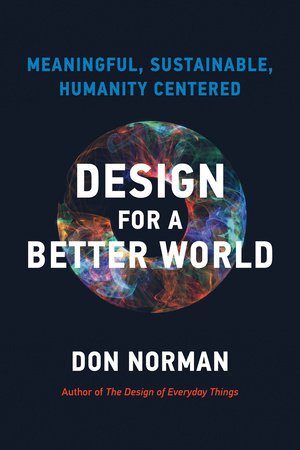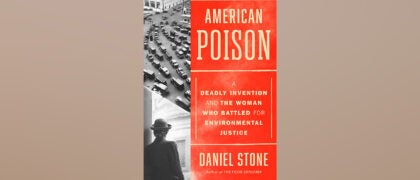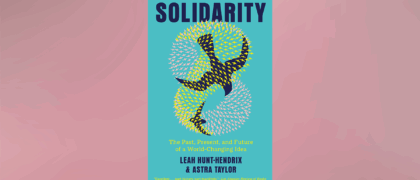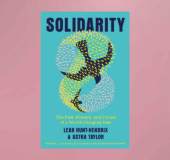How human behavior brought our world to the brink, and how human behavior can save us.
The world is a mess. Our dire predicament, from collapsing social structures to the climate crisis, has been millennia in the making and can be traced back to the erroneous belief that the earth’s resources are infinite. The key to change, says Don Norman, is human behavior, covered in the book’s three major themes: meaning, sustainability, and humanity-centeredness. Emphasize quality of life, not monetary rewards; restructure how we live to better protect the environment; and focus on all of humanity. Design for a Better World presents an eye-opening diagnosis of where we’ve gone wrong and a clear prescription for making things better.
As I sit down to write, I peer to my left out the window looking south to the scene outside. I live on a steep hill in San Diego, California (the local name is Mount Soledad), so my view extends for miles, across the trees and vegetation outside my window, populated by bees, lizards, and hummingbirds, juncos and crows, Red-breasted Hawks, and other creatures I cannot yet name. Even the occasional rabbit. In the distance, I can see the waters of Mission Bay with its many small boats, the Pacific Ocean to the right, with its larger boats and ships, and on a clear day even the hills of the Coronado Islands and the mountain range in the adjoining country, Mexico.
Almost everything I see is artificial, designed. The house is designed and made by people, but even the yard was carefully crafted out of the hills and ravines to be level and smooth by excavating some parts and building up other parts with dirt, some of it from the building of Mission Bay, which was created from what once was a wetland and marsh. The result of this transformation is the largest human-made aquatic park in the United States, where, as is common with this kind of project, ecological concerns were overridden by the requirements for recreation.
The plants and animals are natural but carefully tended by people, who kill or remove those we disapprove of. The houses and roads are clearly designed; the plants are carefully planted and maintained, from the grass to the towering palm trees, some more than 100 feet (30 meters) tall. The weeds were not planned; they are side effects, sometimes called the “unexpected consequences,” except that weeds are always expected.
What about the animals? The wildlife is natural, but its habitat and survival depend entirely on the protection offered by this quiet community and its plants and buildings, which offer shelter and places for burrows and nests. All are aided by the availability of food: leaves and flowers for some of the birds; seeds, insects, and worms for some; and small animals and birds for raptors such as hawks to feed upon. So you could say that the presence of all this living life is another side effect: I suspect some of the animals were both expected and welcomed, but some of them, like the weeds, are considered nuisances and pests, including the gophers and rattlesnakes.
Note that even the terms weed and pest are artificial, for they are not descriptions that nature would use. A weed is a perfectly reasonable plant, just as an animal that is a pest is simply living the way it has evolved to live. It is people who label these natural lives depending on their opinions of plants such as palm trees and dandelions or of animals such as hummingbirds and gophers. People prefer grass, carefully trimmed and maintained: weeds are ungainly. People like animals that do not disturb the environment (or at least the animals should do so out of sight). Gophers make holes in the ground, destroying the “naturalness” of the artificially planted, cropped, and maintained lawns. This is not a bad metaphor for many of the ailments of the world. We like diversity and naturalness, but only as long as they do not interfere with our lives.
We live in a world designed by people. Artifacts abound, from our homes and clothes to our tools, our books. The concept of countries and forms of government are artificial, designed by people. Even things that we think of as natural, a part of nature—such as the earth, the environment, animals, and plants—have been shaped and impacted by people’s creations and activities. And design hasn’t affected just objects. People invented—designed—organizational structures and ways of governing themselves. Hunting and farming. Ways of preparing and cooking food for eating. What else? Name it, and you realize it is artificial, designed. Money, laws and lawyers, clothing, the notion of a country, how people are named. And just as these designs have shaped, molded, and constrained these things, they have in turn shaped us, so we are no longer natural.
The things we design—the artificial—change the way we behave and act so that just as we have changed things through our designs, those things then change us, affecting how we behave and live: we design the world, and it, in turn, designs us. Each of us is but one of the many parts of a complex, interacting, dynamic system that encompasses all of humanity, all of the earth, and, for that matter, all of the solar system, for our lives, even our genetics, and the existence of the things around us have developed to fit within the cycles of weather, ocean tides, daylight, and climate—all strongly impacted by the location of Earth within the solar system. We can neither survive nor even act alone, but only within the constellation in which we exist.
Why Does Our Artificial World Seem so Natural?While Britain ruled India, it imposed severe restrictions and rules of behavior upon the Indians, treating them as second-class citizens. In 1947, Jawaharlal Nehru became the first prime minister of India after the Indians forced the British to leave the country. But although children of the Indian upper classes were allowed to be educated at the top institutions of learning in England (Eton, Harrow, Winchester, Cambridge, and Oxford), “their race [still] relegated them to the second rank.” Afterward, Nehru wrote that it was surprising “that we, or most of us, accepted it [this hierarchical system] as the natural and inevitable ordering of our lives and destiny.” The same holds true for all of us. Our way of existing, our way of being, seems natural to us. After all, it is what we have experienced since birth. It is very difficult to sit back and think through the alternatives, difficult to realize that it doesn’t have to be this way. All too often when we have trouble with technology, we blame ourselves. “No,” I frequently say, “it’s not your fault; it’s due to bad design.” Well, today the world is a mess, and when people complain, I have the same answer: “Bad design.” I don’t mean design as practiced by today’s professional designers but rather design practiced by those throughout the history of humankind who invented, constructed, and developed the world as we know it today.
We have long assumed that the earth was so huge that its resources were for all practical purposes infinite. In a similar way, the ruling classes simply assumed that not all people were equal—some solely by being defined to be in upper or lower classes, some because of their skin color, religion, place of origin, or belief system. Human beings seem to have an ability to form small, cooperating, supporting groups but also to distinguish themselves from other human groups in numerous ways in a process that in the 1930s the anthropologist Gregory Bateson noticed in the communities he was studying. He called this tendency “schismogenesis.” Rather than borrow and copy so that neighboring societies become more alike, many seek to amplify the differences. The result can be extreme distortions, altering societies that actually are quite similar into ones that are quite different. The resulting differences can be extreme, artificial distinctions where before there were none.People are able to take almost any noticeable difference and through schismogenesis or similar mechanisms force divisions and prejudices where before they did not exist. This tendency seems to be the basis for discrimination and prejudices based on skin color, gender, religion, country of origin, language, or accent. It, too, is artificial, shaping almost anything that distinguishes one group from another into a defining characteristic of why the two groups are different. The amplification of small, sometimes insignificant differences then can lead to major areas of disagreement.
We must change the very fundamentals of our lives and being. We must change our way of being on this earth, recognizing that we all are in this together—that we, nature, and the environment form a complex system where changing any part can impact the whole. To understand this system, we must also consider its history, for the current state of our system is path dependent, highly determined by its history. Then we must change the very fundamentals of our lives and our way of living on this earth.
To change our way of being means changing almost everything: how we live, what we make, what we believe, and how we behave. We must question and reexamine all the things that we take for granted, no matter how ordinary, sensible, and logical they may seem. For many of these beliefs and activities, there may very well be completely different frameworks. Only after we recognize that many of the ideas and things we take for granted are artificial constructs fashioned by the people who preceded us can we make a start at a new beginning.
If Design Got Us into Today’s Mess, Can Design Get Us Out?The world is in a mess. Climate change, of course, is at the forefront of everyone’s mind, but it is a symptom not the cause of our difficulties. Climate change is the result of many other fundamental ailments that constitute the root causes of today’s difficulties. If we want to address climate change, yes, we must address the symptoms, but unless we also address the underlying root causes, the problems will continue. The main difficulty is our way of being, our way of residing on the earth, our belief that we, people, have free rein to use the earth’s resources for our own purposes, which means to enhance our comfort and our livelihood. And that difficulty is compounded by the fact that this “we” is not everyone: it is the ruling classes, those with power and wealth that enable some to dominate over others, to enhance their lives, to conquer and rule over territories. The ruling countries have dominated the weaker ones, colonizing them physically at first and then economically, robbing them of their resources.
We inhabit a complex sociotechnical system that encompasses all aspects of the globe: societies, economies, beliefs and behaviors, commerce, education, health, the spread of disease, and ecological disasters. Some relations are direct and obvious, but most are indirect, slow, and not very visible. The latter interactions can be the most dangerous, for they creep up on us, silent and invisible, and by the time we become aware of them and try to act, it may be too late. Examples abound: despite earlier predictions of future pandemics, when the COVID-19 pandemic struck in 2019, the responses were slow and confused, and then the recovery itself has been slow and confused, cycling between periods of optimism and periods of depression, with mixed guidance to people from different countries and different political organizations—even within a given political domain. Meanwhile, the coronavirus responsible for the disease continually changes, introducing more and more variants that evade the medical treatments and cause the scientists to change their approaches and advice. When the virus changes, it is only natural that the scientific advice needs to change as well, but the resulting continual change in advice is blamed on the scientists, not on the virus. The result is decreased trust in scientific advice.
The rise of prejudice, extreme nationalism, and social injustice is also an indirect result of this complex system in which we live. The wide discrepancy in incomes and standards of living between the small percentage of those people who are living comfortably and the vast majority who are not often causes changes in governments, led by people who take advantage of the discontent among the majority, promise improvements, but then use the power they receive for their own power and profit.
The practice of modern capitalism is one of the culprits. The concept of capitalism is not bad in itself. Rather, it is the way capitalism has become deformed and practiced by large corporations, some of them richer than many nations, and by the large financial markets and banks of the world. Here, a search for profit dominates these institutions’ behavior, regardless of the cost to people and the environment. The profits don’t necessarily have to be based on anything substantial, simply the shifts in the valuation of things from moment to moment (sometimes measured in tiny fractions of a second). Models generated by economists govern this activity, measuring success as an increase in monetary value, independent of the impact on human lives or the environment, and solely in terms of monetary values, not societal ones. Moreover, the formal models impact human behavior even though the models themselves have incorrect assumptions about that behavior.
A new beginning is not something that can be done by a single person or a single group. It will take a mobilization of many to change our way of being so that we can change the world, a change in which we measure success not in money or other indexes such as gross domestic product (GDP) but in the wellness and happiness of people—all people.Given all these complex problems, how can design be part of the solution? To most people, including me at first, this doesn’t make sense. However, as I did the research required to write the book, and as I discussed these issues with numerous people from across the world and rethought my own basic assumptions, I realized that design was at the center of the issues that got us here, so a redefinition and restructuring of design could get us out of them. The beliefs and behaviors that structure our lives are designs created by the early developers of government and religions. The resulting social classes and prejudices are artificial. The design profession also has its defining history. It developed as a tool of modern capitalism to help sell the products of the Industrial Revolution. As a result, design and design education today are driven by the need for the companies and clients that hire designers to be profitable.
The modern field of design has therefore unwittingly added to the problems, designing goods that are harmful to the ecosystem through the mining operations required for the materials; harmful through the manufacturing process, through the use of energy during the use of these products, and through the way people became seduced into usage; harmful because they were designed to be difficult to repair or upgrade; and harmful because of the destruction to the environment when they are disposed of—all discussed in part III of this book, “Sustainability.” The harm was and is not deliberate but rather a direct result of the lack of system thinking, the lack of understanding the impact on existing societal attitudes and behaviors, especially in cultures different from those of the Western world.
All these behaviors are artificial in the sense that they are a result of human behavior, which means they all can be changed, but only by rethinking and redefining the role, education, and activities of the design profession, by rethinking the roles that design plays in life, governance, and industry. These are the themes that I address in this book. The task is made easier by many designers’ growing recognition of the need to reframe the field. Mind you, early warnings of the problems were sounded in the late 1800s and in the early and mid-1900s. Today, more and more designers are joining those voices of concern. I add my voice to the others. My framing of the issues is unique, with my major emphasis on human behavior, but the fact that so many people, designers and nondesigners, are voicing their concerns and starting to take action provides a reason for us to be optimistic that we can change things.
Chapter 1
“We design the world, and it, in turn designs us.” This mutual impact of design upon the world and that of design upon us is a basic tenet of the discipline called “Ontological Design,” introduced to the design community in the 1968 book by Terry Winograd and Fernando Flores, Understanding Computers and Cognition. The idea, however, is older, with the basic idea being stated by Winston Churchill in 1943 and by Marshall McLuhan in 1967 (Quote Investigator, “We Shape Our Tools”).
Why Does Our Artificial World Seem So Natural?
The quotes by Nehru come from Alex Von Tunzelmann, Indian Summer, p. 21, location 199 of 9840. Gregory Bateson introduced the term schismogenesis in “199. Culture Contact and Schismogenesis.”
If Design Got Us into Today’s Mess, Can Design Get Us Out?
The arbitrary nature of society, civilization, classes, and governments receives a very thorough treatment in David Graeber and David Wengrow’s The Dawn of Everything New.
Copyright © 2024 by Donald D. Norman. All rights reserved. No part of this excerpt may be reproduced or reprinted without permission in writing from the publisher.
Don Norman is Distinguished Professor Emeritus of Cognitive Science and Psychology and founding director of the Design Lab at the University of California, San Diego. Business Week has named Norman one of the world’s most influential designers. He was an Apple Vice President, has been an advisor and board member for numerous companies, and has three honorary degrees. His numerous books have been translated into over 20 languages, including The Design of Everyday Things and Living with Complexity, also from the MIT Press.






